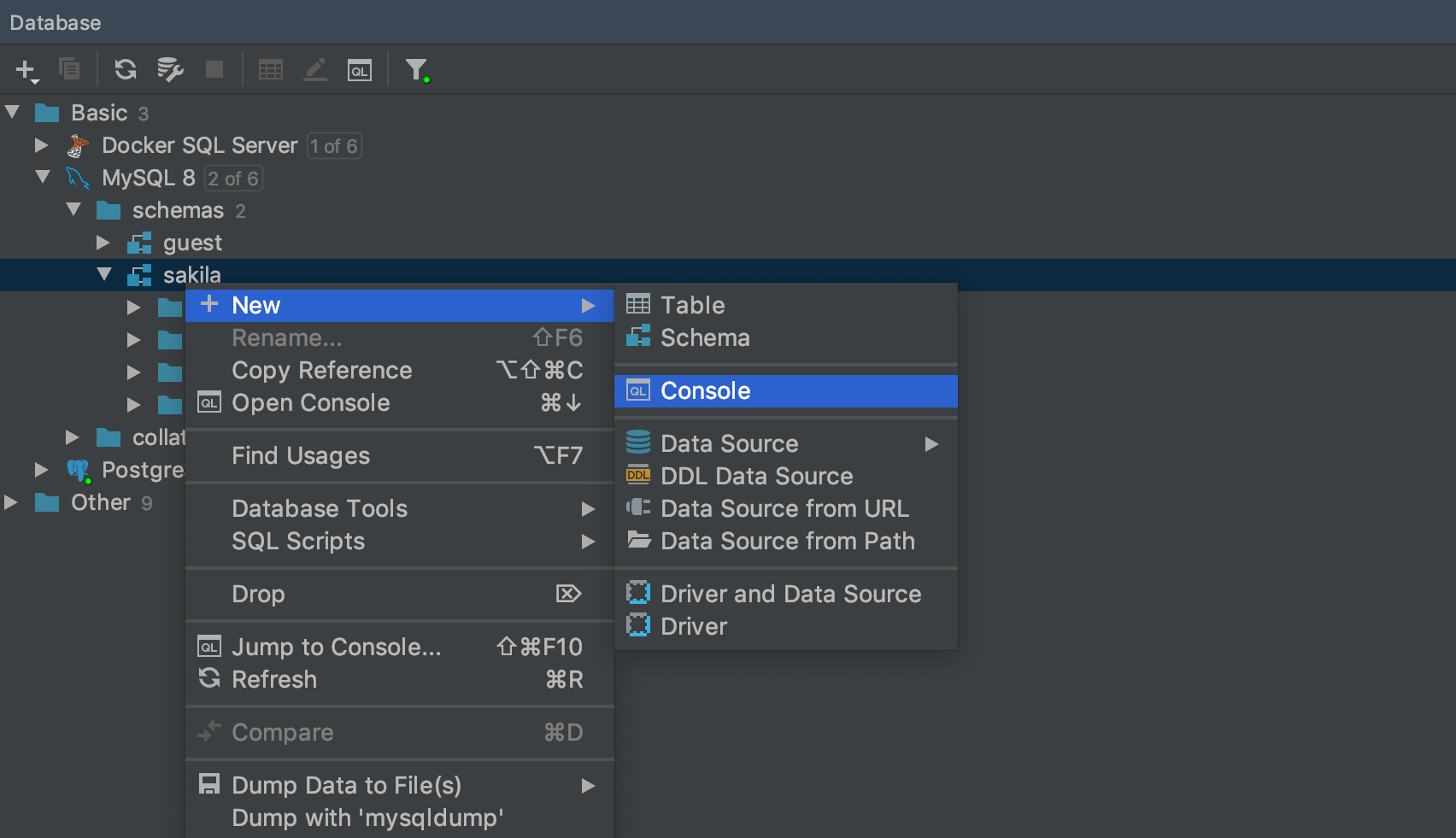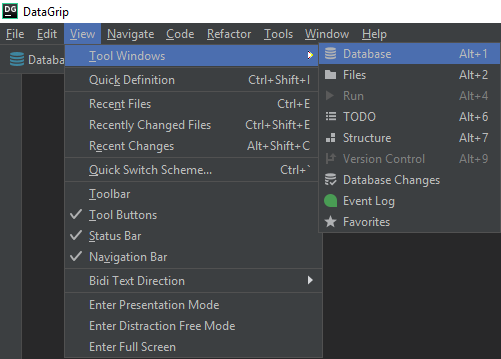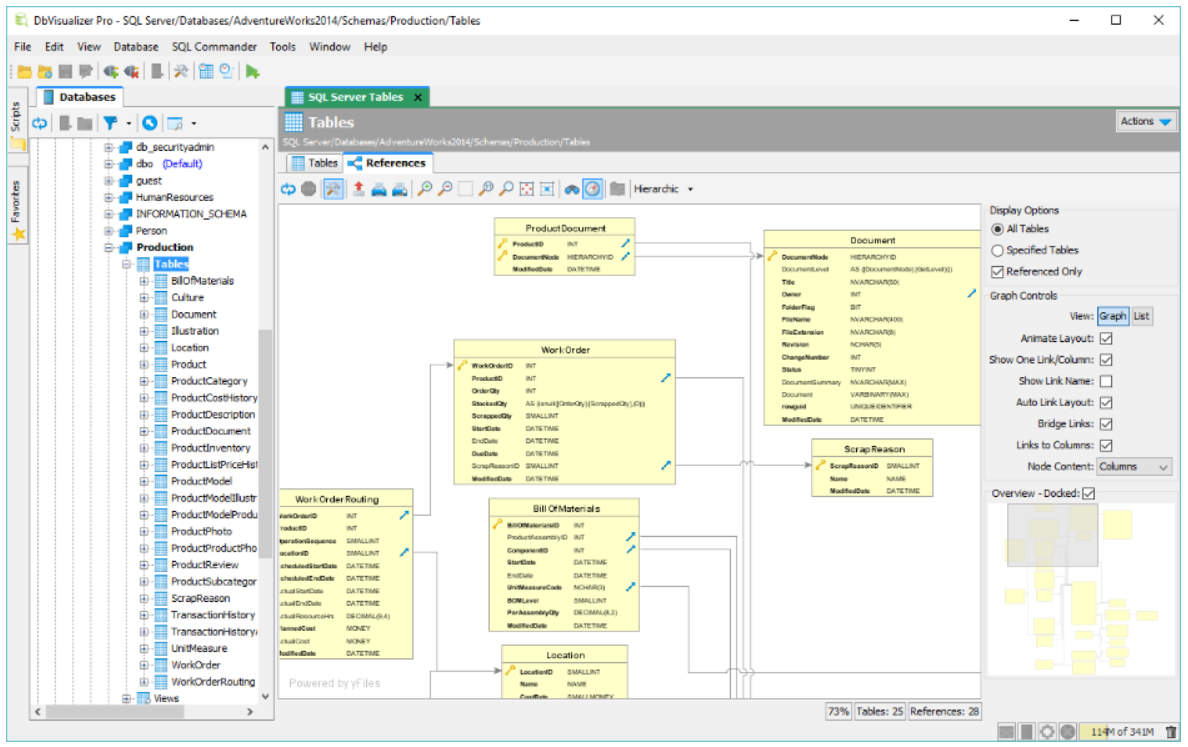

- #Datagrip create database .exe
- #Datagrip create database drivers
- #Datagrip create database driver
- #Datagrip create database zip
- #Datagrip create database download
On the console tab’s toolbar, click the Execute icon. In the console tab, enter this SQL statement: DROP TABLE diamonds In DataGrip, in the Database window’s toolbar, click the Jump to Query Console button. If the diamonds table is not displayed, click the Refresh button in the window’s toolbar. In the Database window, double-click the diamonds table to see its data. To change what happens when you click the Execute icon, select Customize in the drop-down list. Select DROP TABLE IF EXISTS diamonds CREATE TABLE diamon. On the file tab’s toolbar, click the Execute icon. In the file tab, enter these SQL statements, which deletes a table named diamonds if it exists, and then creates a table named diamonds based on the contents of the CSV file within the specified Databricks File System (DBFS) mount point: DROP TABLE IF EXISTS diamonds ĬREATE TABLE diamonds USING CSV OPTIONS (path "/databricks-datasets/Rdatasets/data-001/csv/ggplot2/diamonds.csv", header "true") In DataGrip, in the Database window, with the default schema expanded, click File > New > SQL File.Įnter a name for the file, for example create_diamonds. If you do not want to load a sample table, skip ahead to Next steps. For more information, see Create a table in _. Use DataGrip to load the sample diamonds table from the Sample datasets (databricks-datasets) into the default database in your workspace and then query the table. Step 5: Use DataGrip to run SQL statements
#Datagrip create database drivers
In the Data Sources and Drivers dialog box, on the Schemas tab, check the box for each additional schema you want to access, and then click OK. To access tables in other schemas, in the Database window’s toolbar, click the Data Source Properties icon. Repeat the instructions in this step to access additional tables.

The first set of rows from the table are displayed.
#Datagrip create database driver
Select the Databricks driver that you added in the preceding step. On the Data Sources tab, click the + ( Add) button. Use DataGrip to connect to the cluster or SQL warehouse that you want to use to access the databases in your Azure Databricks workspace. Step 3: Connect DataGrip to your Azure Databricks databases

#Datagrip create database .exe
exe file.įor more information, see Install DataGrip on the DataGrip website.
#Datagrip create database zip
zip file, extract its contents, and then follow the instructions in the Install-Linux-tar.txt file.
#Datagrip create database download


 0 kommentar(er)
0 kommentar(er)
